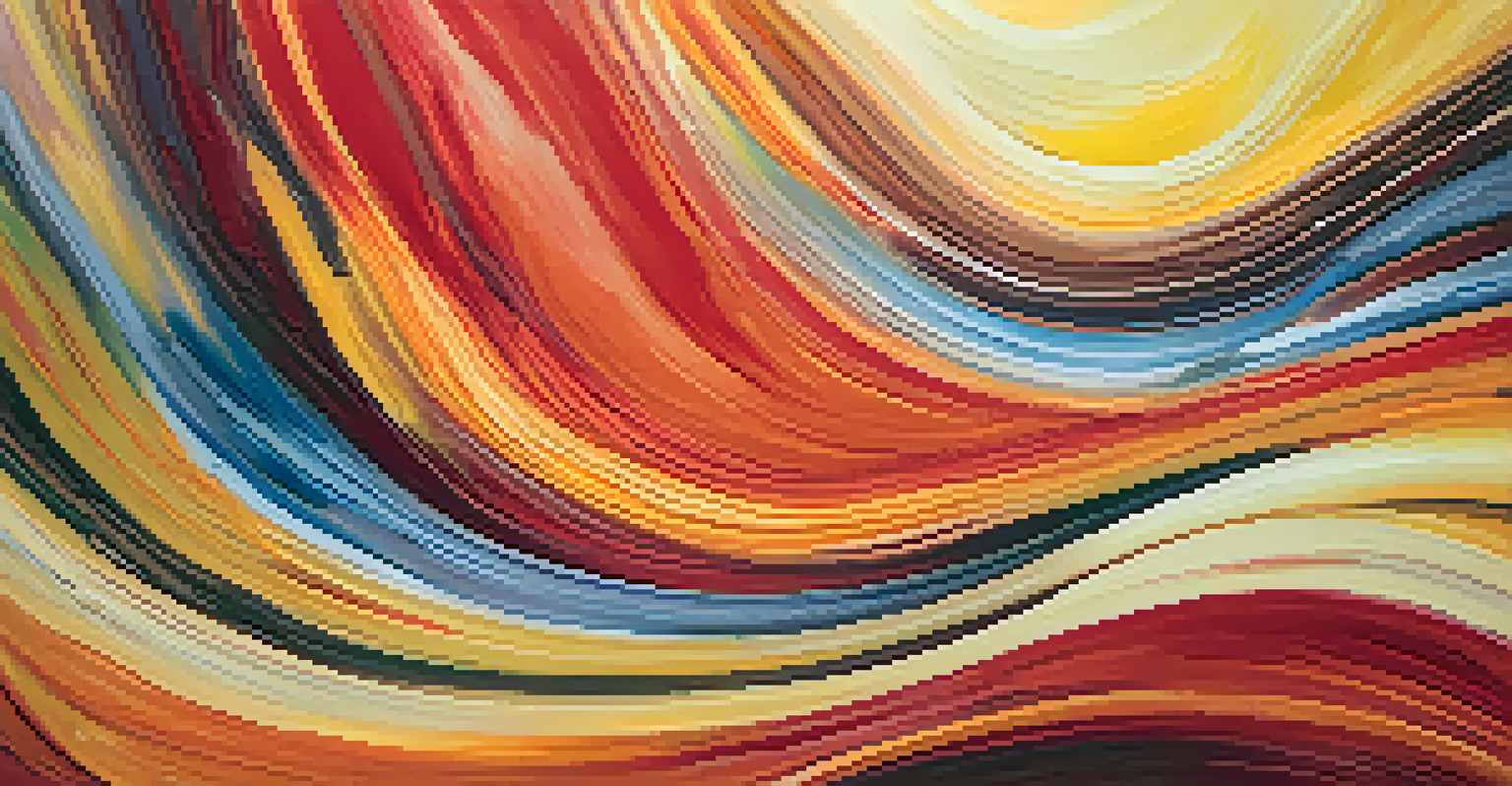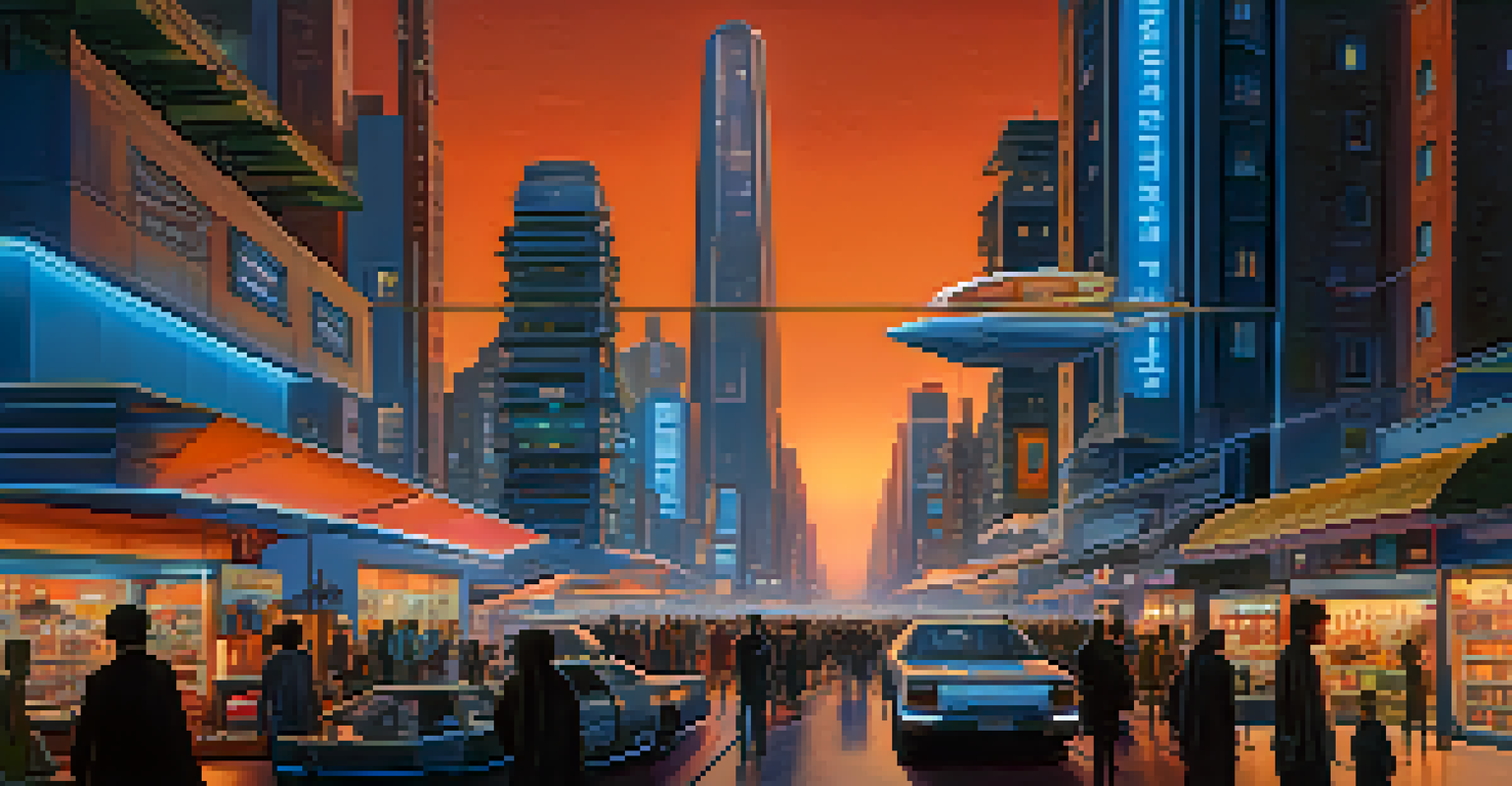Creating Dynamic Backgrounds for Digital Illustrations

Understanding the Importance of Backgrounds in Art
Backgrounds play a crucial role in digital illustrations, setting the tone and context of the artwork. They can enhance the main subject, create depth, and evoke emotions. Think of a serene landscape behind a character; it instantly tells a story about where they are.
The background is just as important as the foreground in creating a compelling piece of art.
A well-designed background complements the foreground without overpowering it. For instance, in a whimsical illustration, a colorful, abstract background can add a playful vibe, while a muted or blurred background can lend a more serious tone. It’s about finding the right balance.
Ultimately, backgrounds are not just an afterthought; they are integral to the overall composition. By investing time in creating dynamic backgrounds, artists can elevate their work and engage viewers more effectively.
Exploring Different Styles of Backgrounds
There are countless styles to choose from when creating backgrounds, each offering a unique feel. From realistic landscapes to abstract patterns, the style you choose should align with the mood of your illustration. For example, a vibrant, cartoonish background works well for children's illustrations.

Consider the genre of your art; a fantasy illustration might benefit from a mystical forest or an ethereal castle in the distance. On the other hand, a sci-fi scene might call for a futuristic cityscape or cosmic elements. The possibilities are endless!
Backgrounds Enhance Artwork
Well-crafted backgrounds set the tone and context, elevating the main subject and engaging viewers.
Experimenting with different styles can lead to unexpected and delightful results. Don’t hesitate to mix and match, or even create a hybrid style that reflects your artistic voice.
Choosing the Right Color Palette
Color is a powerful tool in art, especially when it comes to backgrounds. The right color palette can evoke emotions and set the overall mood of your illustration. For instance, warm colors like reds and oranges can create feelings of warmth and excitement, while cooler colors like blues and greens can instill calmness.
Art is not what you see, but what you make others see.
When selecting colors, consider how they interact with your main subject. High contrast can make your focal point pop, while analogous colors can create harmony. Using tools like color wheels can help you find appealing combinations.
Remember, backgrounds don't have to be overly detailed or vibrant to be effective. Sometimes, a simple gradient or soft wash of color can provide a beautiful backdrop that enhances your artwork without stealing the show.
Incorporating Textures for Depth
Adding textures to your backgrounds can create a sense of depth and dimension, making your artwork feel more dynamic. Texture can be achieved through various methods, such as brush strokes, patterns, or even photographic elements. Think of a sandy beach background; adding grainy texture can make it feel more realistic.
Digital tools offer a plethora of options for incorporating textures. Programs like Photoshop and Procreate allow artists to layer textures, giving them the freedom to experiment. For instance, overlaying a paper texture can give a handmade feel to your digital art.
Color Palettes Set Mood
The right color palette can evoke emotions and harmonize with the main subject, enhancing the overall illustration.
Ultimately, the right texture can elevate your background from flat to fantastic. It invites the viewer to explore the details, enhancing their overall experience of the piece.
Creating Atmosphere with Lighting Effects
Lighting plays a vital role in setting the atmosphere of your background. The way light interacts with elements can dictate the time of day, mood, and even the emotional undertone of your illustration. For example, a soft, diffused light can create a dreamy effect, while harsh shadows can add drama.
Experimenting with different light sources can help you achieve the desired effect. Consider where the light is coming from and how it affects the colors and shadows in your background. A sunset light can cast warm hues and long shadows, creating a picturesque scene.
Incorporating lighting effects not only enhances your background but also ties it into the foreground. The harmony between light and shadow can create a cohesive look that captivates your audience.
Using Perspective to Create Depth
Perspective is a fundamental element in creating dynamic backgrounds that draw the viewer in. By manipulating vanishing points and horizon lines, you can give the illusion of depth. For instance, a winding road that disappears into the distance can lead the viewer's eye through the scene.
One-point and two-point perspectives are common techniques used in digital art. One-point perspective can create a straightforward view, while two-point perspective adds complexity and interest. Experimenting with these techniques can transform a flat background into a three-dimensional space.
Textures Create Depth
Incorporating textures into backgrounds adds dimension and invites viewers to explore the artwork more deeply.
Incorporating perspective not only enhances realism but also adds an engaging narrative element to your illustration. It invites viewers to explore the world you've created.
Finalizing and Refining Your Background
Once you’ve crafted your background, it’s time to refine it. Take a step back and evaluate how it complements the main subject. Does it enhance the story you want to tell? Making small adjustments, such as tweaking colors or adding subtle details, can make a significant difference.
Feedback from peers or online communities can also be invaluable during this stage. Fresh eyes can provide insights that you might have overlooked. Don’t hesitate to share your work and ask for constructive criticism.

Finalizing your background is about striking the right balance between detail and simplicity. A polished background can elevate your digital illustrations to new heights, making them more impactful and memorable.